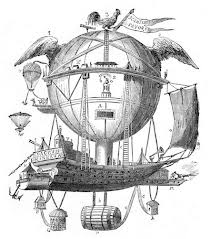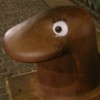The Five-Factor Personality Model

For millennia humans have tried to classify personalities in terms of a small number of attributes.
Frequently they turn to the heavens, taking the state of the stats as the predictor of personality and the future: Western Astrology uses the star sign as indicating the dominant attribute with other features of the horoscope indicating subordinate features that modify the attributes indicated by the star sign. Chinese Astrology uses the year of birth, in a twelve year cycle, to find the dominant personality attributes, and has a complicated system for modifiers that among other things assigns everyone the characteristics of a secondary animal, and there are other systems for example that used in India
In the West in Medieval times personalities were, following theories developed in Ancient Greece, described in terms of humours: sanguine, choleric, phlegmatic and melancholic, which were envisioned as fluids filling the body and determining temperament. In the Twentieth Century some psychologists described personality in terms of a Neurotic-extraverted axis, where Neuroticism describes a tendency to experience negative emotions and Extraversion the tendency to experience positive emotions in response to a given stimulus, and when the dimensions were paired the results resembled the four humour model of the middle ages and this led to a Four_Temperaments model which was expanded to a Five Temperament model and, as with Astrology, both Western and Chinese, was made more complex to describe mixtures of these temperaments.
The Five Factor Model: simplification
All these models assume that personality is a given from birth, and resembles the idea that personality is inherited. Since about 1930 a model of personality based on Five traits or factors has been developed that seems to give a good description of personality, backed by an increasing knowledge of the neural mechanisms correlated with each trait, though, as tends to happen, each of these traits has been assigned facets ( which I will not discuss here). The traits are Neuroticism, Extraversion, Agreeableness, Conscientiousness, and Openness. Neuroticism describes the tendency to react to threats and negative emotions, Extraversion is the response to positive emotions, and predicts risk taking, Agreeableness predicts the harmony of one's social relationships, conscientiousness the ability to follow rules, and openness tends to predict creativity and innovation. I have not yet tried to relate the five factors tot he five Chinese elements though provisionally I would say Fire relates to extraversion, Water to Neuroticism, Metal to conscientiousness, Wood, to Agreeableness and Wind to Openness.
While not perfect this model can be used to produce personality profiles that predict the longevity of a marriage and professional success in particular careers. I have also argued that personality can affect success in esoteric endeavours such as Magic and Manifestation.
There is considerable variation in the levels of each trait in humans and some of the traits, particularly Neuroticism and extraversion also seem to occur in animals. Note that while 50% of personality seems to be inherited, the non-inheritable 50% gives the chance of overcoming the disadvantages of each trait and, with a lot of hard work, taking control of your mind. Also note that different aspects of your personality may dominate in different arenas. You may be in a job where you have to be disagreeable to people, but at home you may be known as a soft caring teddy bear. Many notorious “hard men” match this pattern






